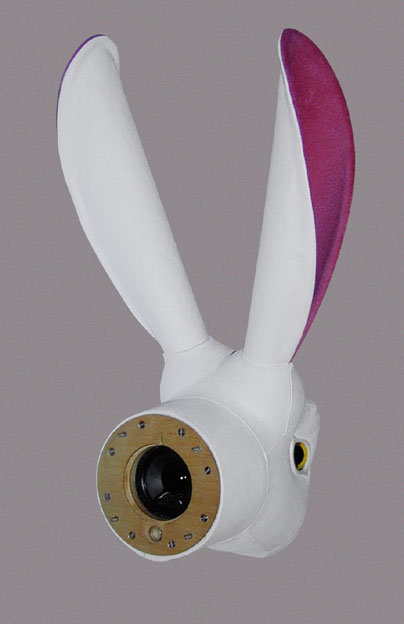 |
|
| Drei Hasen erklären dem Publikum, wie man Menschen klont -
eine ironische Installation über die kritische Auseinandersetzung mit dem aktuellen Thema des Klonens. Drei Hasenköpfe sind nach dem gleichen Schnittmuster aus Leinwandtuch genäht und in ihrer Form auf das wesentliche reduziert, da sie nur als Sprecher geschaffen wurden. Aus einem der drei Köpfe ertönt ein computergenerierter Sprechtext in englischer Sprache und erläutert als vereinfachtes 'Kochrezept' HOW TO CLONE A HUMAN die Prozedur des Klonens von Menschen. Nähert sich ein Betrachter einem stummen anderen Hasen, leitet ein Relais den computergenerierten Sprechtext ohne Unterbrechung zu diesem hinüber, der vorherige Hase verstummt. Die Hasenköpfe sprechen den Text in einer Endlos-Schleife ohne Unterbrechung und Zeitversatz. |
|
| Der computergenerierte Sprechtext: HOW TO CLONE A HUMAN
Materials: Human Tissue, pure human cells of one tissue type, from the individual who will be cloned. / Human Tissue Culture Media, Media in which these human cells will grow and divide. / Minimal Human Tissue Culture Media, Media in which cells will stop dividing, and enter a state of "quiescence" without dying. Der Sprechtext in deutscher Übersetzung |





